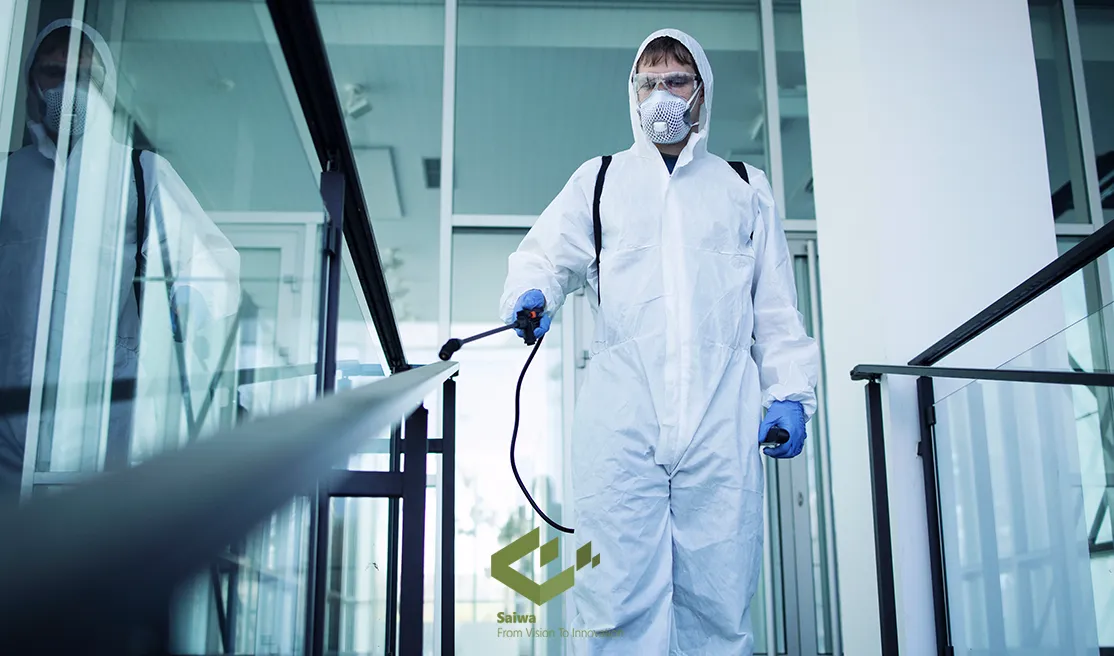The Future of AI in Pest Control

Pest control is a massive global industry aiming to eliminate infestations of insects, rodents, and weed species that can damage agriculture, structures, and human health. While historically reliant on manual techniques and broad spraying, advancements in sensors, robotics, and AI are enabling more intelligent, targeted, and sustainable approaches. When thoughtfully implemented, data-driven AI in pest control tools holds immense potential for improving efficiency, reducing environmental impact, and enhancing domain expertise.
Read Also: Practical Application & Future of AI in Agriculture
AI-Powered Pest Identification

Correctly identifying pest species is the first step for effective control.
Automated Visual Classification
Computer vision techniques can analyze images from traps, monitoring stations, and fields to identify species of pests including insects, rodents, weeds, fungi, and more. Convolutional neural networks classify visual features linked to taxonomic details that discriminate species. Large pest image datasets enable training accurate classifiers. Automation increases throughput over manual identification.
Early Detection and Alerting
By processing monitoring imagery faster, AI pest detection as an AI in pest control tool, provides early warning of emerging infestations before they escalate. Timely alerts prompt rapid response to keep populations in check, improving outcomes. Detections trigger targeted inspections to validate and locate sources. Historic detection data also reveals seasonal and regional patterns to guide proactive monitoring.
Overcoming Human Expertise Limitations
Correctly identifying many uncommon pest species visually requires extensive expert knowledge. AI models can encode specialist-level proficiency in identifying key morphological traits. With exposure to comprehensive training data encompassing species worldwide, AI surpasses human identification, especially for young/larval pests. Augmenting inspector capabilities reduces mistakes and speeds confirmations.
Data-Driven Infestation Analysis
The analytics enhance planning and response agility.
Predictive Analytics for Proactive Management
Correlating past pest outbreak locations and intensities with factors like weather, crops, terrain, and chemicals reveals predictors of future infestations. This enables proactively targeting prevention in probable hotspots just before peak seasons. Predictive analytics shifts management from reactive to data-driven strategic allocation of inspections and preemptive treatments.
Adaptable Response Planning
During evolving pest outbreaks, continuously updated density maps, damage assessments, and spread models guide optimal resource deployment. Severity projections for multiple scenarios facilitate dynamic response planning as conditions change. AI in pest control optimization balances treatment costs, impact projections, operational constraints, and associated risks to advise response sequencing and intensity.
Macro Trend Identification
Aggregating infestation data across farms, regions, and years reveals macro trends like gradually increasing chemical resistance or shifting seasonal cycles tied to climate change. Emerging risk patterns inform pest control strategy and government policy. Big data analytics provide a macro scope complimenting field-level insight.
Read Also: The Synergy of Big Data and AI

Smart Traps, Sensors, and IoT Integration
Wireless sensor networks offer advanced pest-monitoring capabilities. Equipped with computer vision, smart traps detect and count pests, sending notifications when threshold levels are met. Environmental sensors monitor crucial factors such as humidity and soil moisture. Movement sensors track pest traffic patterns. Integrating these IoT data streams facilitates complete real-time tracking for rapid response. Back-end analytics reveal macro trends across locations.
Read Also: An Over View Applications of Computer Vision in Agriculture
Targeted, Optimized Treatment Application
AI in pest control empowers precise targeted application of pesticides, herbicides, and rodenticides.
Precision Targeting and Variable Dosing
Automated sprayers and bait dispensers utilize AI and sensors to activate only in areas where pests have been detected and adjust the dose based on localized density, rather than uniform blanket application. This reduces the use of unnecessary pesticides and minimizes environmental release. The variable application improves efficacy by providing appropriate concentration while eliminating waste.
Optimized Treatment Plans
AI assistance considers pest types, densities, weather, environmental data, and operational constraints to optimize treatment plans. Models balance efficacy projections, costs, resource needs, and risks such as resistance for recommended control strategies. Humans finalize plans considering qualitative factors. AI offers evidence-based decision support for complex planning.
Minimizing Harmful Runoff
By only applying treatments in affected zones rather than entire fields, precision targeting curbs wasteful runoff into waterways and soil. Limiting doses to detected pest levels further reduces excess discharge. AI-powered spraying enables more responsible application improving sustainability. However, ecosystem impact monitoring is still crucial.
Read More: The Rise of Smart Spraying Technology in Agriculture
Improving Operational Efficiency Using AI in Pest Control
Optimize schedules and plan inspection routes to maximize technician productivity and coverage. Automate inventory management to maintain adequate treatment stocks and reduce waste. Use predictive maintenance to detect potential equipment failures and minimize downtime. For large organizations, utilize AI for dispatch, supply chain logistics, personnel allocation, and other operations to enhance reliability and responsiveness.
Compliance, Reporting, and Expert Augmentation
AI augments human capabilities and institutional knowledge for pest control organizations.
Automated Compliance Reporting
Accurate record-keeping and compliance reporting are crucial in pest control due to health and environmental concerns. Manual tracking of application dates, chemicals, dosage, and technician information can be time-consuming. AI automates the digitization of paper records and log files, and auto-generates mandatory regulatory reports for safety and transparency purposes.
Augmenting Inspector Expertise
Pest control professionals must assess infestations and determine appropriate remedies. Expert systems offer contextual recommendations by analyzing aggregated data on efficacy, site characteristics, and regulations. This enhances the individual experience with institutional insights. Augmented reality aids inspectors by overlaying helpful reference information.
Immersive Training Simulations
Training field technicians thoroughly is vital, yet difficult. VR simulations offer practical training in identifying and managing diverse infestations with extreme detail in a safe environment. This provides hands-on experience before technicians encounter real-world health hazards. Immersive simulations also accelerate competency development through experiential learning.
Conclusion
AI-driven tools have the potential to enhance pest control with increased efficiency, sustainability, and integration of human expertise. However, responsible use of automated systems mandates prudent oversight and governance. Holistically cultivated data-driven AI for pest control offers more effective, targeted, and ecologically sound management of infestations, benefiting both society and the environment.
Note: Some visuals on this blog post were generated using AI tools.

